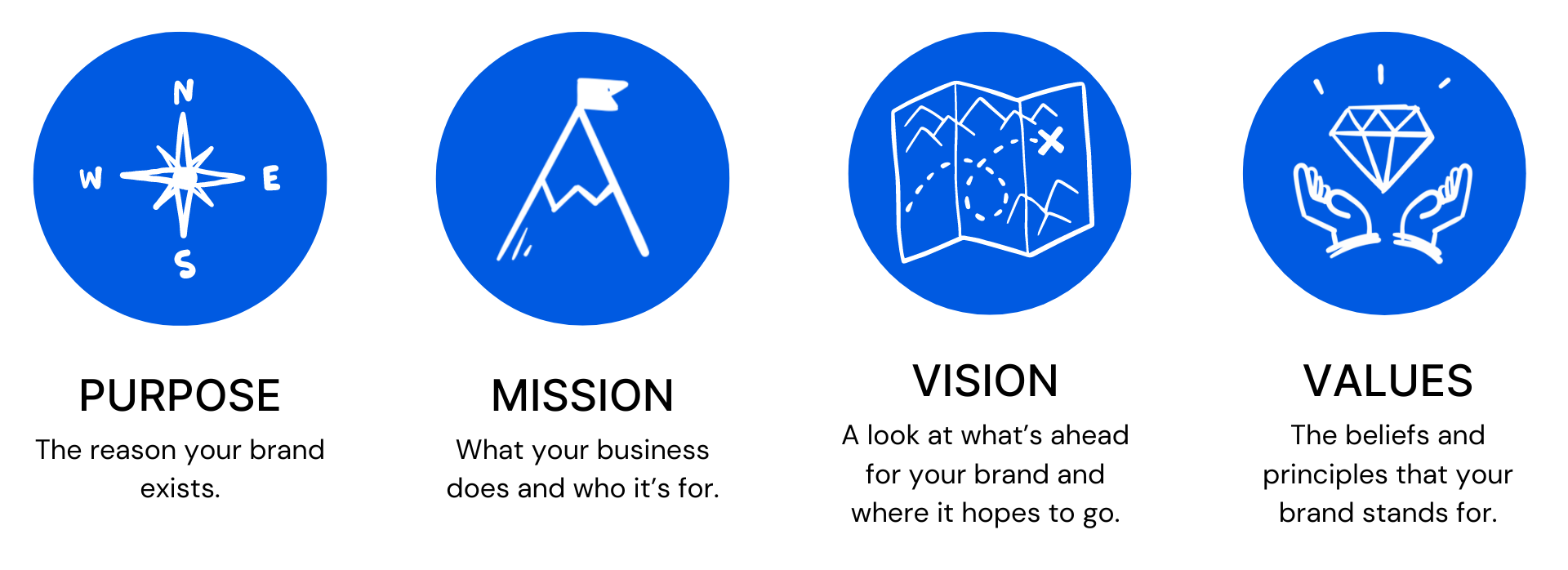5 Steps to Building Your B2B Brand Strategy: Part One

Before I get going, it should be said that the 5 key steps to building a B2B brand strategy are not easy to squeeze into a blog! Hence, why I’ve broken this down into two parts. I could undoubtedly write a whole book on the topic (and hey, maybe I will), but for now, here’s my stab at trying to distill it down to the basics.
Building a brand strategy marks the beginning of an exciting phase for your brand’s growth. However, branding is often oversimplified as logo creation, a catchy tagline, and a style guide. In reality, developing a brand strategy extends far beyond aesthetics; it requires time, research, and collaboration.
To create a truly impactful brand strategy, there are five crucial steps businesses should follow. In part one of this series, we’ll look at the first three steps to building the infrastructure for your brand strategy.
Before you get started
Once you’ve decided to invest in building your brand strategy, take time to set your brand launch goals, timeline, and budget. Identify your key stakeholders and what their roles and level of participation will be, then employ an experienced brand strategist who can facilitate and manage the execution of your brand strategy from start to finish.
Your goals, timeline, and budget are touchstones for you to come back to before, during, and after your brand launch. They should be realistic, but not require you to compromise on your core vision or values.

1. Establish your brand’s purpose, mission, vision, and values
Establishing your brand’s purpose is the first key step in fleshing out the necessary elements for your brand strategy. Ask:
- Why does your brand exist?
- What need or desire is your brand looking to fulfill?
- What are the pain points and challenges that your brand solves for?
The answers to these questions will inform your brand identity by acting as the core pieces of the brand puzzle including your mission, vision, and values. Let’s dig a little deeper into these:
- Mission: Your mission statement describes the brand’s purpose and summarizes why it exists. It should aim to create an emotional connection with your target audience, and evolve over time as your business grows and develops new goals. Mission statements should be concise, describing the company offering, who it’s for, and the values that drive its purpose. Example:
- Google’s mission statement: “Google’s mission is to organize the world’s information and make it universally accessible and useful.”
- Vision: A company’s vision is a look into its future, and describes what the brand hopes to achieve through its mission statement. Example:
- LinkedIn’s vision statement: “To create economic opportunity for every member of the global workforce.”
- Values: A company’s values should inspire your audience, team members, and potential future employees by sharing the beliefs that your brand stands for. These core values should guide the identity, voice, and behavior of your brand, and should be visible on your website’s “About” or “Careers” page. Example:
- Slack’s company values:
- Empathy
- Courtesy
- Thriving
- Craftsmanship
- Playfulness
- Solidarity
- Slack’s company values:
With these elements in place, you now have the building blocks to start fleshing out the next step in the brand strategy process: nailing down your target audience.

2. Identify your target audience
The good news is, you’ve already done the initial legwork of identifying your target audience by defining the pain points and challenges that your product or service solve for. From here you can start to better define your consumer base, or in the case of B2B audiences, your ideal customer profile (ICP) and buyer personas that will be the most profitable and have the greatest need for your solution.
Cognism has a handy downloadable template to help with identifying your ICP, but here’s a breakdown of what you need to determine in addition to pain points:
- Industry
- Business maturity
- Company size
- Location
- Budget
- Purchase intention
- Decision makers
- Buying cycle
- Business goals, short and long term
- Technologies that compliment, integrate with, or might be dependent on your solution (or vice-versa)
- Significant attributes/drivers (e.g., Are they currently using a similar product or service? What are they known for within their industry? Are they running an ABM strategy? etc.)
If you’re running an ABM strategy, this will inform the basis of your target account list (TAL). From here, you’ll want to dedicate time to map each account so that you can then establish who the advocates, power-users, buyers, and decision makers are within each account.
Next, pinpoint what personas you want to focus your efforts on. Personas are the individuals within your ICPs that you want to engage with. You’ll need to identify the roles and titles of these individuals to create an effective contact list. To do this, ask:
- What is the organization structure?
- Who are the potential primary users/advocates?
- Who are the decision makers?
To gain a comprehensive understanding of your target audience, engage in extensive market research. Utilize various methods such as surveys, focus groups, and online analytics tools. Doing so will provide valuable insights into your buyers’ preferences, requirements, and online activities.
Once you have your target audience mapped out and defined, it’s time to move on to the next step in creating your brand strategy: understanding your position in the market.
3. Define your Positioning
In order to have a clear understanding of your position in the market, you have to first have a thorough idea of who your competitors are, and what sets your brand apart from them. This step, much like identifying your target audience, requires time and research. By conducting a competitor analysis, you can better understand the key differentiators to hone in on with your positioning and messaging.
With a comprehensive picture of the competitive landscape, you can now determine what your key differentiators are. These will be an important anchor for your messaging and brand identity, as they will help to define your position in the market and why your brand is unique in its offering or solution.
“If I had to pick one magic pill for marketing success it would be this: Differentiation.” writes Dave Gerhardt, Founder & CEO of Exit Five. “I believe that any marketing tactic can work today. SEO works. Events work. Content works. TikTok works. YouTube works. Influencers work. But the 20% that drives the 80% is no doubt how you position your product, and specifically what the differentiator is.”
How you position your brand will not only help you stand out amongst competitors, it will also represent your value and ultimately help to keep you top of mind for individuals or businesses who are looking for the product or service you offer.
Conclusion
Okay, I think this is a good place to take a break before we dive into part two, which will cover developing your brand identity and finally, implementing your brand strategy. Hopefully part one of this series has given you a solid idea of the infrastructure needed to build your brand strategy. Establishing your brand’s purpose, mission, values, audience, and positioning are all enormous steps in growing your business and, in turn, its brand identity.
As exciting a venture as this is, building a brand strategy is an equally complex undertaking. If done right, you have all the foundations for success, but remember: don’t skip the pre-game step of setting your goals, timeline, and budget. These are your benchmarks for success, and should be supported by all your stakeholders before diving in.
Now, onto part two: putting your plan into action!
